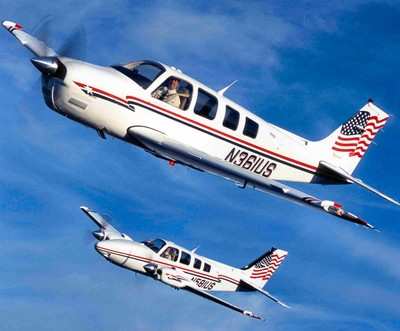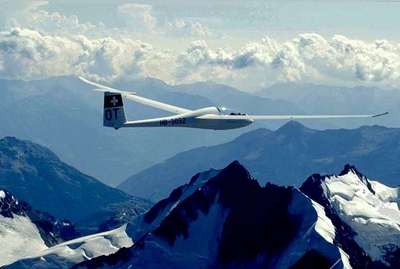EAA: Three Years Removed From 9/11 - Where Does GA Stand?
 While much time and space will be
dedicated in the next few days regarding all that has occurred
since the events of Sept. 11, 2001, an under-reported change -- at
least by the general media -- is how these events affected the
general aviation community. EAA, along with other general aviation
organizations, pilot groups and individuals, was thrust into a
brand new world where the individual's freedom to fly in the US was
scrutinized as never before. There has been no other issue that has
dominated the time and efforts of all aviation organizations as
this has over the past three years.
While much time and space will be
dedicated in the next few days regarding all that has occurred
since the events of Sept. 11, 2001, an under-reported change -- at
least by the general media -- is how these events affected the
general aviation community. EAA, along with other general aviation
organizations, pilot groups and individuals, was thrust into a
brand new world where the individual's freedom to fly in the US was
scrutinized as never before. There has been no other issue that has
dominated the time and efforts of all aviation organizations as
this has over the past three years.
Where does general aviation stand today? There is good news and
bad news in the big picture. First, let's look back at the days
immediately following 9/11/01. General aviation was shut down in
the US and faced an extremely bleak and uncertain future. There
were major questions of whether individuals would ever again have
the freedom to fly in and around major metropolitan areas. Talk of
incredibly onerous, expensive and unrealistic security measures
that would be demanded of all aircraft was commonplace. Immediate
concern was evident about the future of all flying activities, from
private flight training to the biggest fly-in of all - EAA
AirVenture Oshkosh. Our freedom and dreams of flight were
threatened as never before.
It took a tremendous amount of dedication and hard work by EAA
and all aviation groups to patiently and repeatedly educate
Congress and the many agencies and people involved in the newly
created security bureaucracy. It meant bringing common sense and
thoughtful solutions to a highly charged atmosphere that was not at
all favorable to aviation.
The General Aviation Coalition, chaired by EAA during that
period, took a major leadership role to produce common-sense
security measures that would enhance the already-strong sense of
safety and security evident among the nation's general aviation
pilots. EAA's Chapter network, AOPA's Airport Watch and consensus
recommendations from GAMA, NBAA, NATA and HAI, among others, showed
the GA community's leadership in this area.

At the same time, EAA was also relentless in its efforts to
complete the new entry-level categories of pilots and aircraft used
for recreation: The sport pilot/light-sport aircraft rule, which
became effective on Sept. 1. EAA's ability to spearhead this new
initiative while also preserving freedoms and privileges that were
threatened in the aftermath of 9/11 demonstrates EAA's unique
relationships with government and the aviation community. The sport
pilot/light-sport aircraft movement holds some of the greatest
promise yet for aviation growth.
There is, however, still much work to be done. While most
general aviation pilots are able to enjoy their privileges largely
unfettered in the post-9/11 world, there are areas that still
demand solutions. Those include, among others:
- The restrictive ADIZ airspace surrounding Washington, D.C.,
that has smothered GA activity in the mid-Atlantic region and
created severe economic burdens for affected airports, particularly
those known as the Maryland Three: College Park, Hyde Field and
Potomac
- Temporary Flight Restrictions (TFRs) that often pop up on short
notice and cause problems even for pilots who go to great lengths
to abide by the law
- Overflight bans at major-league stadiums and other venues that
were rushed through under the guise of "security," but actually
only preserve economic control over those venues
- Unrealistic and inflexible legislation, such as that affecting
the Cleveland Air Show operations earlier this month
- An overzealous and biased general media, which repeatedly and
unnecessarily fans the flames of public fear and distrust regarding
aviation through sensational reporting.
EAA will strive to find solutions to these unfair situations, by
using its own considerable efforts and unified with other aviation
groups.

Our work is far from finished. Aviators must remain vigilant, as
skepticism remains in many areas of the public and media. A primary
fact, however, also remains: General aviation, like any conveyance,
is vulnerable in some respects to misuse - but it is not a
significant threat to US security. This is a point that must be
made by individuals and groups at every possible juncture. It is
also shows the necessity to support EAA and other aviation groups
that have the resources and relationships to find solutions.
 Classic Aero-TV: Extra Aircraft Announces the Extra 330SX
Classic Aero-TV: Extra Aircraft Announces the Extra 330SX Aero-News: Quote of the Day (11.15.25)
Aero-News: Quote of the Day (11.15.25) ANN's Daily Aero-Term (11.15.25): Middle Marker
ANN's Daily Aero-Term (11.15.25): Middle Marker NTSB Final Report: Lancair 320
NTSB Final Report: Lancair 320 Airborne 11.14.25: Last DC-8 Retires, Boeing Recovery, Teeny Trig TXP
Airborne 11.14.25: Last DC-8 Retires, Boeing Recovery, Teeny Trig TXP





